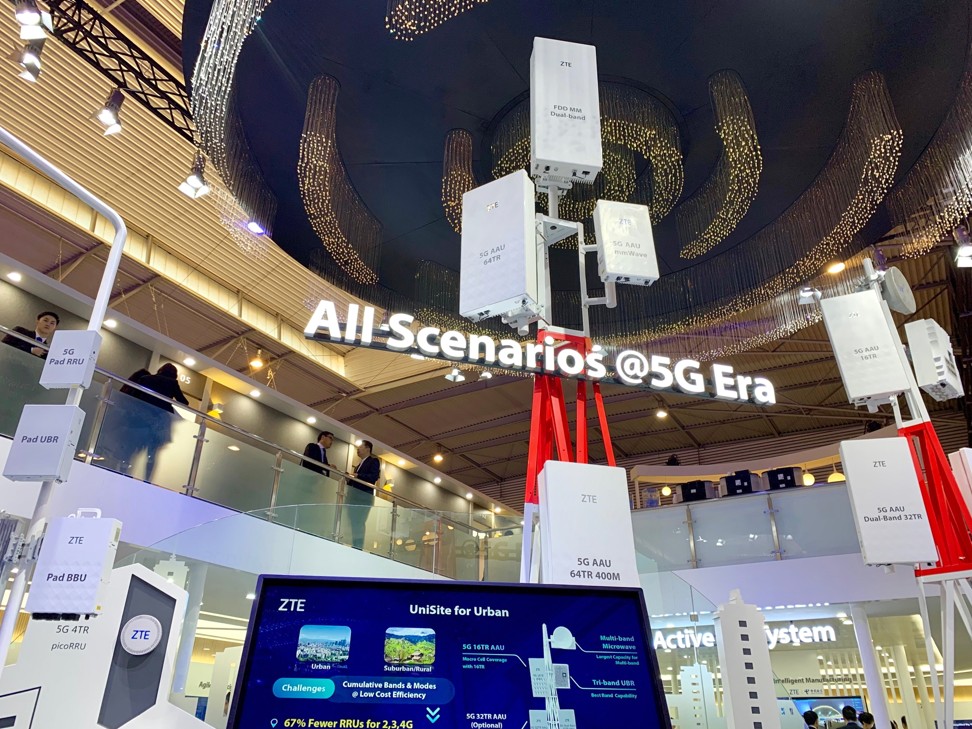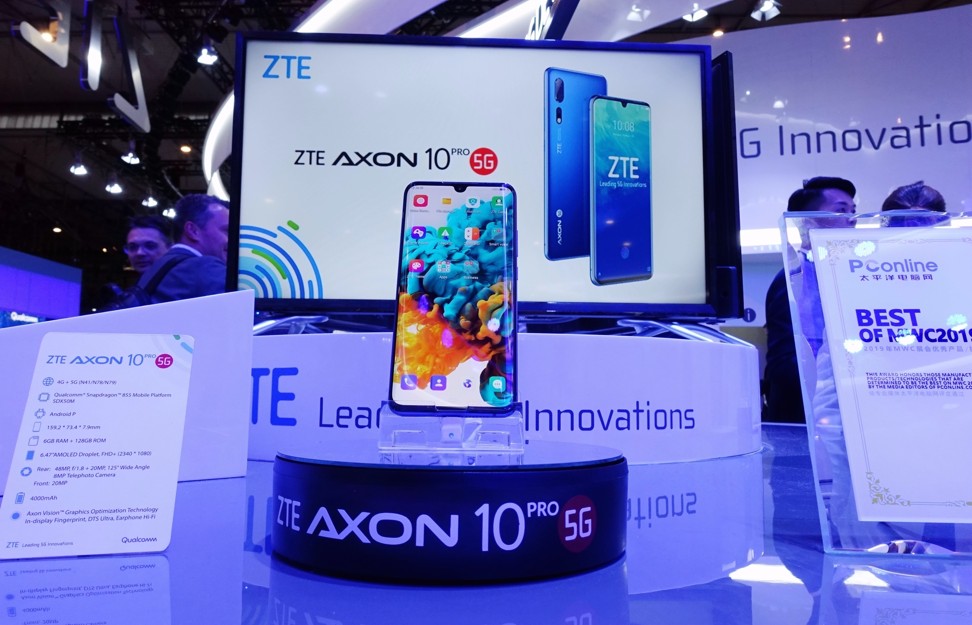
ZTE steps up 5G investments as it seeks comeback after near-death experience
- The Shenzhen-based telecoms equipment giant reported a record annual loss of US$1 billion in 2018

Remember ZTE Corp?
The Shenzhen-based telecommunications equipment maker hogged global headlines a year ago when the US government dropped the hammer on the Chinese state-linked company for breaching the terms of an earlier deal on trade sanctions violations.
It has kept a low profile since a management change and as its cross-town rival Huawei Technologies has become embroiled in a high-profile international dispute with the US government.
On Wednesday, ZTE reported its biggest-ever annual loss of 6.98 billion yuan (US$1 billion) in 2018, capping a year in which it was brought to the brink of collapse after Washington ordered American hi-tech companies not to do business with the Hong Kong-listed Chinese telecoms gear supplier.
At the height of that saga, ZTE was hesitant to replace a damaged American-branded urinal at its headquarters for fear of violating the terms of its probation, sources in the company said then.
In the past year, the company has stepped up its investments in building security evaluation centres similar to the one that Huawei operates under supervision of the UK government. Three centres are expected to come into operation in China, Belgium and Italy within this year.
By building those centres, ZTE hopes to provide assurances to telecoms network operators and governments about the integrity and security of its 5G equipment, according to people familiar with the matter. The people said the company will soon release a white paper about its 5G cybersecurity efforts. ZTE declined to comment on this initiative.
“ZTE has been relatively quiet about its 5G ambitions, despite working hard to develop solutions in this area,” said Paul Haswell, a partner who advises technology companies at international law firm Pinsent Masons. “So ZTE may be able to succeed where Huawei wouldn’t be able to because it has stayed out of the media spotlight.”
ZTE and Huawei represent China’s two 5G champions. The technology offers faster data rates, reduced latency, energy savings, cost reductions, higher system capacity and massive device connectivity than previous generations of mobile network systems.
If “big data” is the new oil of the digital era, then 5G is the next set of pipes that will deliver it – and unlike previous generations, China is determined to own more of this mobile technology, giving it mastery of its own industrial future.

Although ZTE is not named in the US campaign, Washington’s pressure on Huawei is implicit on ZTE because of the Chinese company’s status as the world’s fourth largest telecoms equipment supplier.
Telecoms operators in some countries in Europe may be on the fence about deploying 5G gear from Chinese suppliers because of the US pressure, according to ZTE vice-president Eddy Tang, who serves as chief technology officer for the company’s Europe and Americas region, in an interview on the sidelines of the MWC Barcelona trade show last month.
Still, Tang said at the time that ZTE already secured six commercial 5G contracts on top of its large supply deals with China Mobile, China Unicom and China Telecom. Huawei, the industry’s biggest supplier, had 25 5G contracts at the time, while Finland’s Nokia announced 22 and Sweden’s Ericsson 10.
ZTE has been under a cloud after losing an estimated US$3.1 billion after halting most of its operations because of US-imposed sanctions last year. The company agreed to pay a US$1.4 billion fine in September as part of a settlement to lift US export restrictions, which had barred it from buying vital US-made components, including semiconductors.

Shares of ZTE fell to a 52-week low of HK$9.56 in June last year because of that ban, but rebounded to a high of HK$27.05 in March this year. The company’s shares closed unchanged at HK$21.90 on Wednesday, ahead of its financial results announcement.
Jefferies equity analyst Edison Lee, who had predicted a loss of 5.6 billion yuan for ZTE in 2018, said the company’s record loss was mainly from its penalty payments to the US.
Lee said it made sense for ZTE to focus on restoring customer confidence, improving its products, and boosting its research and development activities amid Huawei’s issues with the US and concerns over when Washington and Beijing can strike a trade deal.
“ZTE is likely to be better off keeping a low profile as Chinese telecoms equipment continues to be a politically sensitive subject,” he said.

Still, ZTE has been cooperating with about 30 telecoms network operators around the world on 5G research and development as of the end of February, according to company chief executive Xu Ziyang during an extraordinary shareholders meeting on March 20.
China, the US, Japan and South Korea are the countries now leading the global race to launch commercial 5G mobile services, which are expected to drive more industrial applications over the internet.
In China, 5G capital spending was estimated to range from 900 billion yuan to 1.5 trillion yuan between 2020 and 2025, according to a study by the China Academy of Information and Communications Technology, a research institute under the Ministry of Industry and Information Technology. That infrastructure outlay will be led by telecoms network operators China Mobile, China Unicom and China Telecom.
“There is a short window for the first 5G network deployments and those who win it at the start will be able to win the entire race,” ZTE chairman Li Zixue said during the same shareholders meeting.
ZTE, however, is behind its cross-town rival in Shenzhen. Its network equipment market share in China is between 25 per cent to 30 per cent, compared with 40 per cent to 45 per cent for Huawei, according to Jefferies estimates. Huawei also has an estimated 40 per cent share in Europe.
“It is likely to be more difficult for ZTE to have a breakthrough in Europe because the company now poses a higher perceived risk to European operators owing to the 2018 US export ban,” Jefferies’ Lee said. European operators will also have little motivation to switch equipment vendors in 5G to avoid potential interoperability problems, he added.
“We, however, expect ZTE to be able to increase its market share in China as soon as the three operators there start building 5G networks in selected areas,” he said.
ZTE has kept pace with Huawei in owning so-called 5G standard essential patents, according to a study by German research firm IPlytics. The stakes are high for Huawei and ZTE because the target market for 5G patent licensing will be much larger than 3G and 4G, as the next-generation patents will be required outside the smartphone sector.
“If ZTE abides by the terms of its US probation, there is no reason it can’t plan a recovery,” said Haswell of Pinsent Masons. “But since the same allegations levelled at Huawei have previously been made against ZTE, there’s no guarantee that the West will be a concrete part of that plan.”